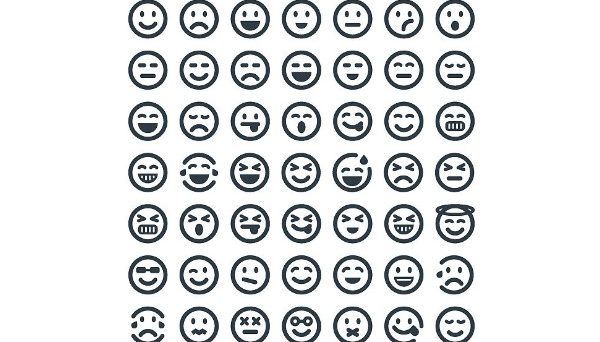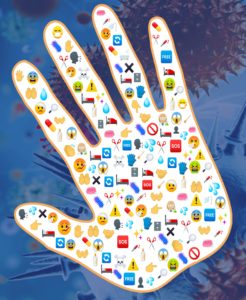
Emojis are increasingly used in the place of language worldwide, conveying nonverbal communication cues and other subtleties present in face-to-face communication that are lost when put into writing, and proving to exert a direct effect on readers’ moods. They have enabled users from different countries to communicate in a standardized way with single compact characters circumventing language barriers. They became so commonplace that the Oxford dictionary announced “😂” as the 2015 word of the year.
Using simplified reminders of hand hygiene with emojis may be more beneficial and less time consuming compared with the detailed materials used for training hospital cleaning staff
Internet access to medical information has gone far beyond reading sources as we are witnessing more interactive communication methods being introduced each day. In a recent study, new emojis were designed and the possibility of using emojis to depict clinical signs and symptoms was evaluated.
Medical emojis have a great potential to gain popularity on digital platforms as the Internet is an integral part of both healthcare workers’ and patients’ lives.
Emojis in infection prevention and control
The implementation of infection prevention and control (IPC) programs is recognised as a global health priority, and a failure to achieve an adequate level of IPC harms patients around the world.
In recent times, trends in infectious diseases have become rapidly detectable in populations via the Internet and social media.
Understanding interactions between a disease and public emotions represented by emojis could be effective to both predict and ameliorate the public’s fear to infectious diseases.
The example of hand hygiene
Healthcare-associated infections are considered a threat to patient safety; hand hygiene with alcohol-based hand rub is globally recognised as the cornerstone of IPC for preventing healthcare-associated infections.
Although hand hygiene is a simple procedure, adherence levels worldwide are still alarmingly low despite interventions. Emojis could be helpful in bridging the large gap that exists between the verbal text-based and nonverbal face-to-face interactions related to hand hygiene.

The first study to assess the impact of emojis on hand hygiene demonstrated that emojis can enhance hand hygiene in hospitals by providing visual cues and preventing forgetfulness concerning when it needs to be performed. Furthermore, the change of emoji to emoji following hand hygiene performance, reinforced the hand hygiene behavior by providing instant feedback in patients’ rooms.
There are currently several hand gesture emojis available, however there is no specific for hand washing, hand-rubbing or hand-rub. The act of
cleaning hands could be only demonstrated using a sequence of any of the existing hand emojis with the emoji, which is more complicated than using a single emoji. For example, emojis may be interpreted as applauding the use of soap and they may not directly demonstrate hand washing with soap. The development of specific hand hygiene-related emojis will enable health professionals to communicate more specifically regarding their discoveries and concerns in this field.
Using simplified reminders of hand hygiene with emojis may be more beneficial and less time consuming compared with the detailed materials used for training hospital cleaning staff.
The general public, including patients suffering from healthcare-associated infections, might be able to easily share and communicate the problems they have faced, as they could be better heard globally using different emojis. Furthermore, hand hygiene-related emojis on social media could regularly remind us to protect ourselves against healthcare-associated infections, and the spread of influenza or antimicrobial resistance.
Emojis may empower IPC in different aspects such as raising awareness with no language barrier, educating people to adopt healthy behaviors, and enhancing surveillance systems to monitor infectious diseases. It is recommended to evaluate the relevance and appropriateness of the current set of emojis to use for hand hygiene promotion in order to harness the potential beneficial impact of these symbols. Medical emojis that are standardized as a new category of emojis offer much hope for the future, especially in the field of IPC.
Comments